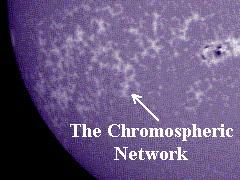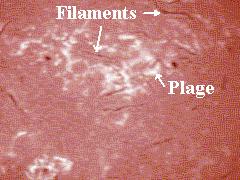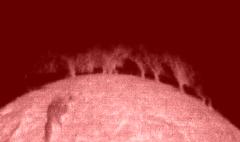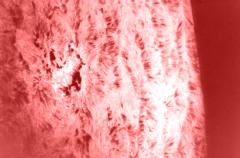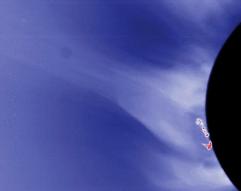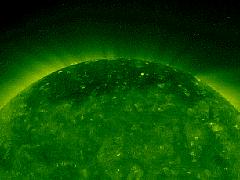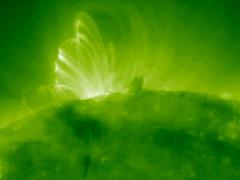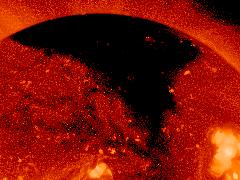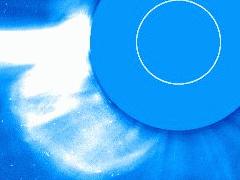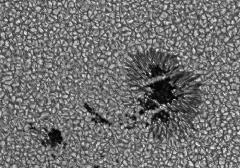 |
|
Click on image for larger version. |
Sunspots
Sunspots appear as dark spots on the surface of the Sun. Temperatures in the dark centers of sunspots drop to about 3700 K (compared to 5700 K for the surrounding photosphere). They typically last for several days, although very large ones may live for several weeks. Sunspots are magnetic regions on the Sun with magnetic field strengths thousands of times stronger than the Earth's magnetic field. Sunspots usually come in groups with two sets of spots. One set will have positive or north magnetic field while the other set will have negative or south magnetic field. The field is strongest in the darker parts of the sunspots - the umbra. The field is weaker and more horizontal in the lighter part - the penumbra.
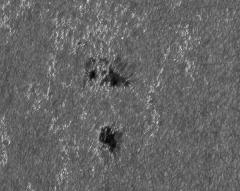 |
|
Click on image for larger version. |
Faculae
Faculae are bright areas that are usually most easily seen near the limb, or edge, of the solar disk. These are also magnetic areas but the magnetic field is concentrated in much smaller bundles than in sunspots. While the sunspots tend to make the Sun look darker, the faculae make it look brighter. During a sunspot cycle the faculae actually win out over the sunspots and make the Sun appear slightly (about 0.1%) brighter at sunspot maximum that at sunspot minimum.
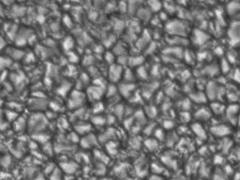 |
|
Click on image for larger version. |
Granules
Granules are small (about 1000 km across) cellular features that cover the entire Sun except for those areas covered by sunspots. These features are the tops of convection cells where hot fluid rises up from the interior in the bright areas, spreads out across the surface, cools and then sinks inward along the dark lanes. Individual granules last for only about 20 minutes. The granulation pattern is continually evolving as old granules are pushed aside by newly emerging ones. The flow within the granules can reach supersonic speeds of more than 7 km/s (15,000 mph) and produce sonic "booms" and other noise that generates waves on the Sun's surface.
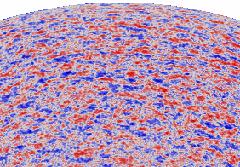 |
|
Click on image for larger version. |
Supergranules
Supergranules are much larger versions of granules (about 35,000 km across) but are best seen in measurements of the "Doppler shift" where light from material moving toward us is shifted to the blue while light from material moving away from us is shifted to the red. These features also cover the entire Sun and the pattern is contually evolving. Individual supergranules last for a day or two and have flow speeds of about 0.5 km/s (1000 mph). The fluid flows observed in supergranules carry magnetic field bundles to the edges of the cells where they produce the chromospheric network.
